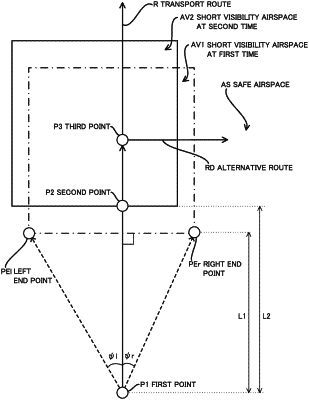| CPC G05D 1/106 (2019.05) [B64C 39/024 (2013.01); G01S 17/933 (2013.01); G06T 7/20 (2013.01); G06T 7/50 (2017.01); G06T 7/60 (2013.01); G06T 7/70 (2017.01); G06V 20/17 (2022.01); G06V 20/176 (2022.01); G06V 40/103 (2022.01); B64U 2201/10 (2023.01); G06T 2207/10032 (2013.01); G06T 2207/30181 (2013.01); G06T 2207/30196 (2013.01)] | 20 Claims |

|
1. A control system comprising:
at least one first memory storing first program code; and
at least one first processor configured to read the first program code and operate in accordance with the first program code, wherein
the first program code includes:
acquisition code configured to cause the at least one first processor to acquire information indicating a location of a first point at which an aircraft, the aircraft configured to fly a predetermined route, detects a short visibility airspace that has shorter visibility than a predetermined distance and information indicating a location of a second point at which the aircraft determines that the aircraft has entered the short visibility airspace;
estimation code configured to cause the at least one first processor to estimate size of the short visibility airspace, based on the location of the first point and the location of the second point indicated by the acquired information and sensing information acquired at the first point by sensing performed by a first sensor that the aircraft mounts;
setting code configured to cause the at least one first processor to set a safe airspace having higher safety than the short visibility airspace, based on the estimated size of the short visibility airspace and the sensing information acquired at the first point; and
control code configured to cause the at least one first processor to perform control to cause the aircraft to move to the set safe airspace when it is determined that flight continuation along the route passing through the short visibility airspace is impracticable, based on information output from a second sensor that is mounted on the aircraft and that is different from the first sensor.
|